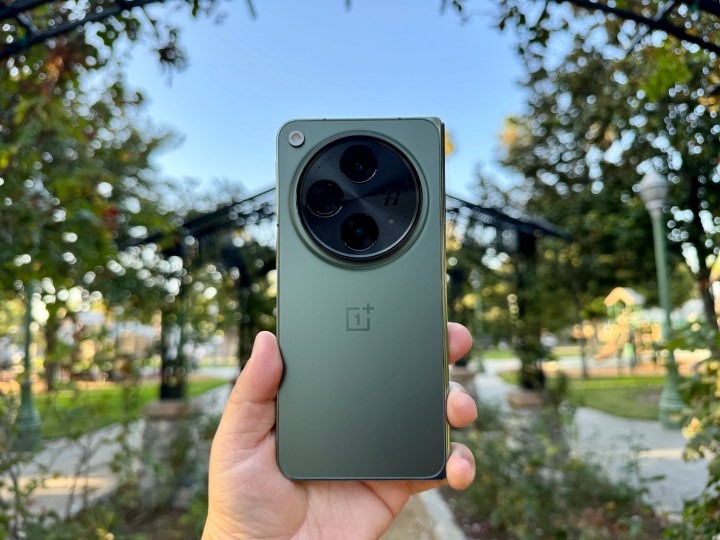
Beyond the Spec Sheet: The Ultimate Guide to Decoding Flagship Android Phone Reviews
Decoding the Hype: How to Truly Judge Flagship Android Phones
Every few months, the tech world erupts with a familiar frenzy. A new flagship Android phone is launched, heralded by dazzling marketing campaigns, breathless Android News headlines, and a spec sheet that reads like a spaceship’s blueprint. We’re bombarded with gigahertz, megapixels, and nits of brightness. But once the launch-day dust settles, how do you, the consumer, separate genuine innovation from clever marketing? How do you look at two seemingly identical glass rectangles and decide which one is worth a thousand dollars of your hard-earned money?
This is not another technical breakdown of backend processes or kernel optimizations. This is a real-world guide to reading between the lines of every review you watch and every article you read. We’re moving beyond the numbers to explore the nuances that define a truly great flagship experience. This comprehensive guide will arm you with the knowledge to critically evaluate the latest Android Phones, understand the ecosystem of Android Gadgets they belong to, and ultimately, make a choice that you’ll be happy with for years to come.
Beyond the Spec Sheet: What Truly Defines a Flagship?
The first pitfall for any prospective buyer is getting lost in the “spec war.” Manufacturers love to tout bigger numbers, but in the modern flagship landscape, these numbers often have diminishing returns. A truly premium device is a symphony of hardware and software working in perfect harmony, and understanding this is the first step to becoming a savvy consumer.
The Processor Power Myth
Modern flagship chipsets, like Qualcomm’s Snapdragon 8 Gen series or Google’s Tensor chips, are marvels of engineering. They can handle 4K video editing, console-level gaming, and complex AI tasks without breaking a sweat. However, for the vast majority of users, this power is largely theoretical. The real-world difference in speed between this year’s top chip and last year’s for tasks like browsing social media, sending emails, or watching videos is virtually imperceptible.
Real-World Application: The true bottleneck is no longer raw power, but software optimization. A Google Pixel, with its custom Tensor chip and highly optimized software, often feels smoother and more responsive in daily tasks than a competitor’s phone with a technically “more powerful” processor but a heavier, less optimized software skin. When reading a review, pay less attention to benchmark scores and more to the reviewer’s comments on stutter, lag, and overall fluidity during day-to-day use.
Display Wars: More Than Just Pixels and Refresh Rates
A phone’s display is your window into the digital world, and manufacturers are constantly pushing the boundaries. Here’s what the key terms actually mean for you:
- Refresh Rate (Hz): A higher number (e.g., 120Hz or 144Hz) means smoother scrolling and animations. It’s a quality-of-life feature that’s hard to go back from once you’ve experienced it.
- Brightness (Nits): This is crucial for outdoor visibility. A phone with 1500+ nits of peak brightness will be easily readable under direct sunlight, while a dimmer screen will have you squinting.
- Color Accuracy: This determines how true-to-life the colors are. While a vibrant, saturated screen (like Samsung’s) is great for media consumption, a color-accurate screen (like Sony’s) is better for photo editing and creative work.
Case Study: Consider the Samsung Galaxy S24 Ultra versus the Google Pixel 8 Pro. Both have fantastic displays, but with different philosophies. The Samsung panel is renowned for its incredible peak brightness and punchy, vibrant colors that make videos pop. The Pixel 8 Pro, while also bright and smooth, is often praised for its more natural color calibration. A reviewer who focuses on this distinction provides more value than one who just lists the resolution and refresh rate.

The Growing Importance of the Ecosystem
A flagship phone is no longer a standalone device; it’s the centerpiece of an ecosystem. Seamless integration with watches, earbuds, and tablets is a massive part of the value proposition. Samsung’s ecosystem allows you to take calls on your Galaxy Tab or have your Galaxy Buds switch automatically from your phone to your watch. Similarly, Google’s Pixel ecosystem offers deep integration between the Pixel Phone, Pixel Watch, and Pixel Buds. When choosing a phone, you’re also investing in a family of Android Gadgets, a critical consideration often buried at the end of reviews.
The Real-World Gauntlet: Testing What Actually Matters
A phone’s performance on paper is one thing; its performance in your hand is another. The best reviews simulate the chaos of a real day, pushing the device beyond sterile lab tests to see how it holds up under pressure.
The “All-Day” Battery: A Tale of Two Users
“All-day battery life” is perhaps the most subjective and misleading claim in the smartphone industry. An “all day” for a light user who occasionally checks email is completely different from an “all day” for a power user who games, uses GPS navigation, and is constantly on 5G. The most useful metric to look for in a review is Screen-on-Time (SoT), which measures how long the display was active on a single charge.
Real-World Scenario: A reviewer who says, “I got 7 hours of screen-on-time with a mix of Wi-Fi and 5G, including 90 minutes of gaming and an hour of Google Maps,” gives you a concrete, relatable benchmark. Also, consider charging speeds. A phone with a slightly smaller battery but ultra-fast 100W charging might be more practical for your lifestyle, as a 15-minute top-up can provide hours of use. This is an actionable insight that a simple milliamp-hour (mAh) number can’t provide.
Computational Photography: The AI in Your Pocket
Stop counting megapixels. In the era of computational photography, the camera’s software and image signal processor (ISP) are far more important than the sensor’s raw resolution. This is why a 12MP photo from a Google Pixel can often look better than a 108MP photo from a competitor. The magic happens after you press the shutter.
Detailed Comparison:
- Google Pixel: Known for its true-to-life color science, incredible shadow detail, and class-leading portrait mode. It uses AI to produce a clean, realistic image that looks like a moment frozen in time.
- Samsung Galaxy: Tends to produce more vibrant, saturated, and brighter images. It’s a “social media ready” look that many people love, even if it’s not strictly realistic.
- iPhone: Sits somewhere in the middle, often praised for its video recording capabilities and consistent, reliable results across all lenses.
A good review won’t just say “the camera is good.” It will show side-by-side comparisons in challenging lighting conditions (low light, backlit subjects) and explain the different processing philosophies.
The Software Experience & The Update Promise
You can have the fastest hardware in the world, but if the software is clunky, your experience will be poor. This is a major differentiator among Android Phones. Do you prefer the clean, minimalist, and AI-driven approach of Google’s Pixel UI, or the feature-packed, endlessly customizable experience of Samsung’s One UI? Furthermore, the manufacturer’s commitment to software updates is a critical measure of a phone’s long-term value. A phone that receives 7 years of OS and security updates (like recent Pixel and Samsung flagships) is a far better investment than one that is only promised 2 or 3 years.

The Intangibles: User Experience, Design, and Long-Term Value
Some of the most important aspects of a phone can’t be measured in numbers. These are the “feel factors” that determine whether you love or merely tolerate your device over the long haul.
In-Hand Feel and Build Quality
How a phone feels in your hand matters. The choice of materials—Gorilla Glass Victus for durability, aluminum or titanium for the frame—affects not just the premium feel but also the weight and balance. Ergonomics play a huge role. A phone with curved display edges might look sleek and feel thinner, but it can lead to annoying accidental touches. A device with flat sides might offer a more secure grip. These are subjective but vital details that a thorough review should cover, as they impact your daily interaction with the device more than you might think.
The “Skin” in the Game: One UI vs. Pixel UI
The Android “skin” or user interface (UI) is the software layer you interact with for everything you do. It’s arguably more important than the version of Android it’s built on.
- Samsung’s One UI: It’s the kitchen sink approach. If you can think of a feature, it’s probably in there. From advanced multi-window capabilities to deep customization with the Good Lock app, it’s a power user’s dream.
- Google’s Pixel UI: It’s about simplicity and intelligent assistance. Features like Call Screen, which screens spam calls for you, and Now Playing, which identifies songs playing nearby, are genuinely useful AI-driven tools that you won’t find elsewhere.
Choosing between them is a matter of personal preference: do you want a toolbox with every possible tool, or a smart assistant that anticipates your needs?
Resale Value and Long-Term Viability

A flagship phone is a significant investment. A factor often overlooked in initial reviews is its long-term resale value. Historically, iPhones hold their value best, but in the Android world, flagship devices from Samsung and Google tend to have a much stronger resale market than those from other brands. This is directly tied to brand recognition and the all-important software update promise. A phone guaranteed to be secure and up-to-date for 7 years will naturally be worth more to a second-hand buyer in 3 years than a phone that has already stopped receiving updates.
Your Perfect Flagship: A Decision-Making Framework
Now that you’re armed with this knowledge, how do you apply it? Here are some best practices and a framework to help you choose the right flagship for you.
Best Practices for Reading Reviews
- Triangulate Your Sources: Never rely on a single review. Watch videos, read written articles, and even browse user forums like Reddit to get a well-rounded perspective.
- Prioritize “Day in the Life” Reviews: Look for reviewers who describe their actual experience using the phone over several days, not just those who read off a spec sheet in a studio.
- Define Your Priorities First: Before you even start looking, make a list of your top three priorities. Is it camera quality? Battery life? A clean software experience? Gaming performance? This will act as your North Star and prevent you from being swayed by features you don’t need.
A Persona-Based Recommendation Guide
- For the Point-and-Shoot Photographer: You value a camera that you can pull out, snap a picture, and trust to get a great shot every time, especially of people and in tricky lighting. Look towards the Google Pixel series.
- For the Power User & Media Junkie: You want the best possible screen for watching movies, the most features to tinker with, and powerful performance for multitasking and gaming. The Samsung Galaxy S Ultra series is likely your best bet.
- For the Minimalist & AI Enthusiast: You want a phone that is simple, smart, and “just works.” You value a clean interface and clever, helpful software features over endless customization options. The Google Pixel series is designed for you.
- For the Aspiring Cinematographer: You take video seriously and want granular control over every aspect of the recording process, from frame rates to manual focus. Consider the Sony Xperia line, known for its pro-level camera apps.
Conclusion: The Smartest Choice is an Informed One
The world of flagship Android Phones is more exciting and competitive than ever. The key to navigating it successfully is to shift your perspective. Stop chasing the biggest numbers and start focusing on the holistic experience. A great smartphone is more than the sum of its parts; it’s about how the display, battery, camera, and software come together to create a seamless, reliable, and enjoyable companion. By understanding the nuances of software optimization, real-world battery performance, computational photography, and the value of a long-term update promise, you can cut through the marketing hype. The “best” phone isn’t the one with the highest score on a benchmark test; it’s the one that best fits your life.



